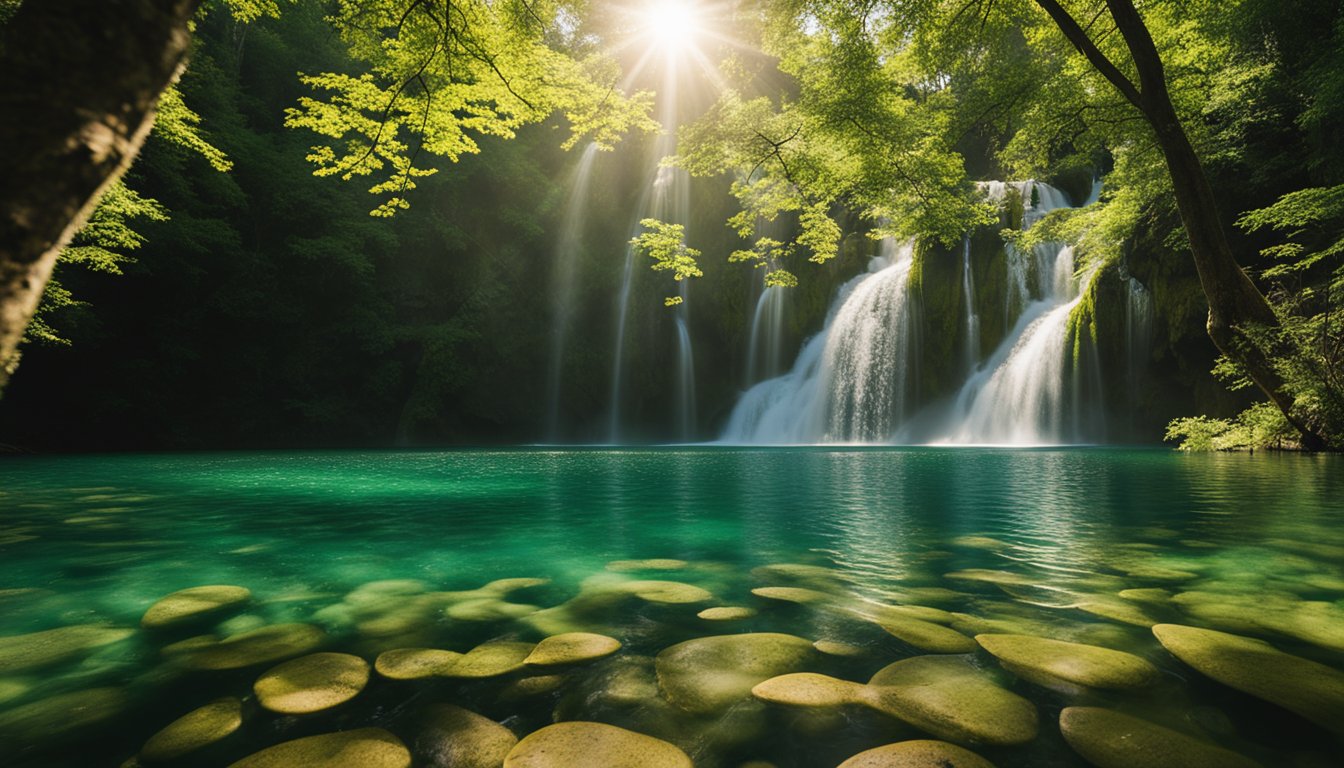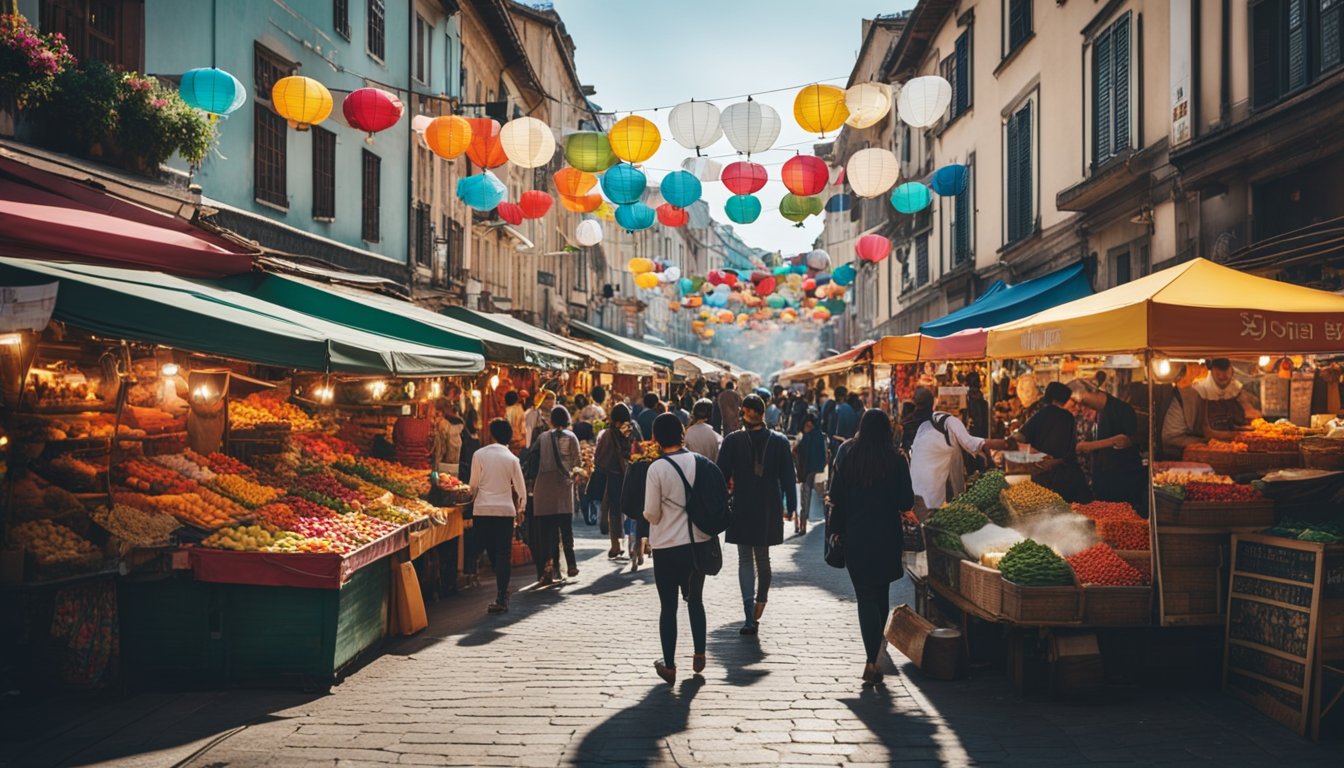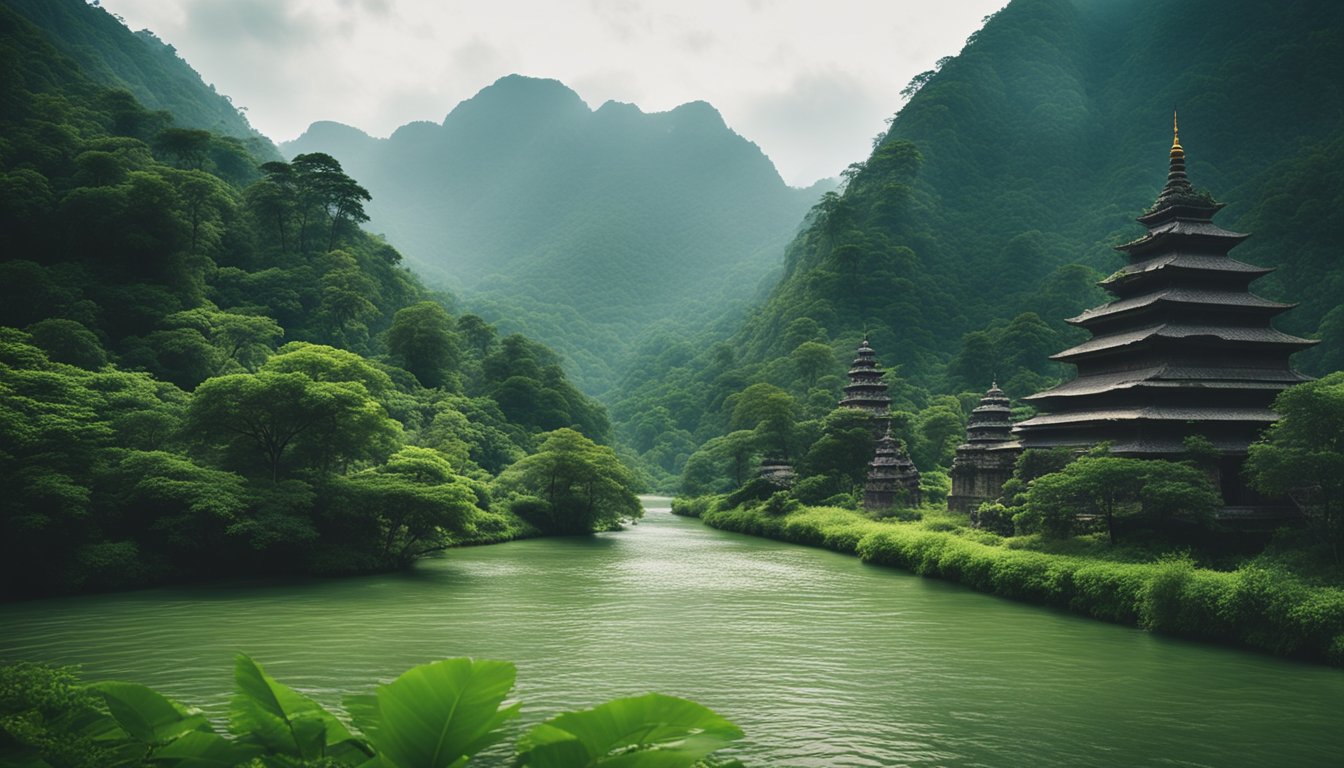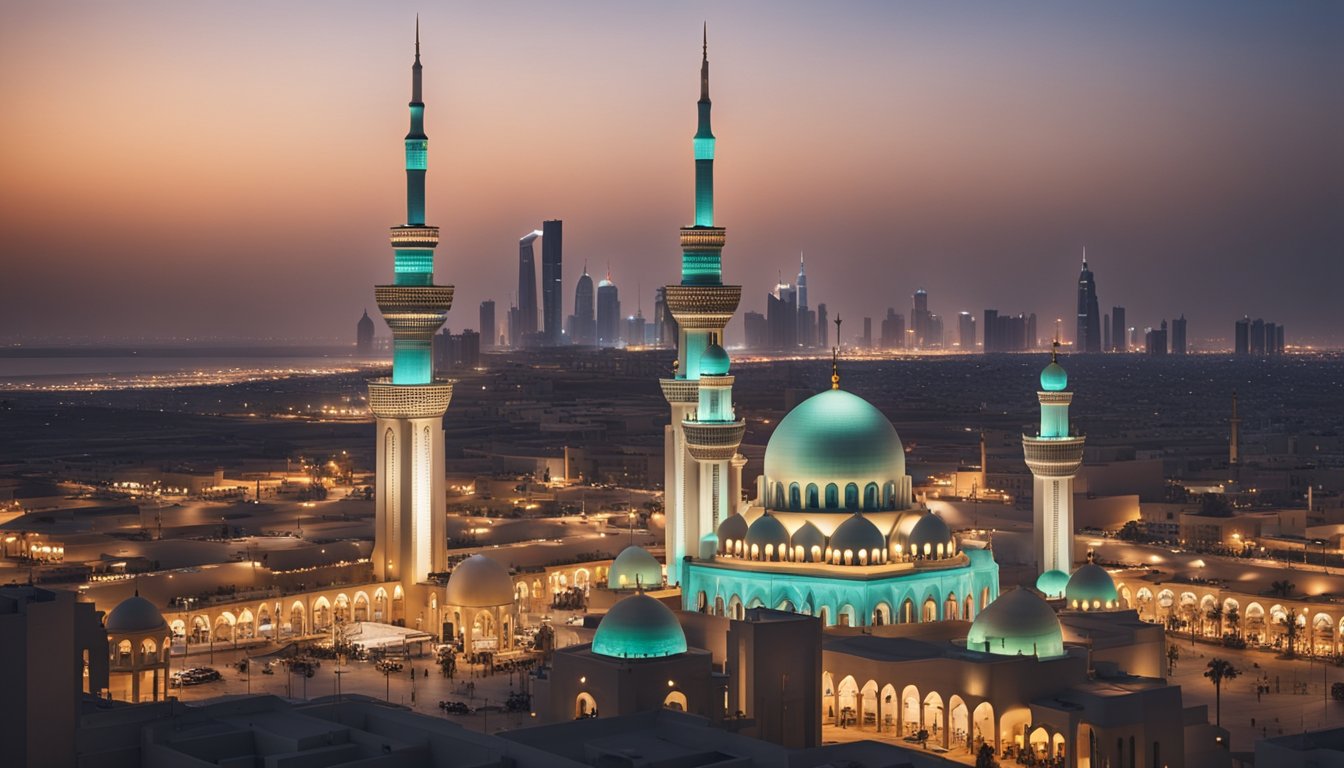Plitvice Lakes National Park, Croatia’s most popular tourist attraction and a UNESCO World Heritage site, offers a breathtaking natural experience that is unsurpassed in its beauty and ecological value. This haven of lush greenery and cascading turquoise waters captivates visitors with a blend of 16 interconnected lakes, waterfalls, and diverse wildlife. The unique geological process of tufa formation, which creates the park’s distinctive barriers and thus the lakes and waterfalls, continues to shape the landscape to this day.

Navigating the park’s extensive network of wooden walkways and paths allows visitors to immerse themselves in its pristine environment. The layout of the park is such that you can experience the splendor of its lakes from both upper and lower perspectives, ensuring that every angle offers a different visual treat. The sound of water flowing over moss-covered travertine barriers adds an element of enchantment to the stroll.
Beyond the scenery, Plitvice Lakes National Park serves as a vital habitat for a variety of flora and fauna. Its forests are home to deer, bears, wolves, and numerous bird species, adding to the park’s richness and the visitor’s sense of adventure. While touring, guests are reminded of the importance of conservation and the role that protected areas play in preserving Earth’s precious ecosystems for future generations.
Getting to Plitvice Lakes National Park

Visitors can reach Plitvice Lakes National Park by various means of transport, each having its own advantages. The park is accessible by car, bus, and even train, with various routes and stations to consider.
By Car
Traveling by car offers flexibility and is ideal for those visiting from nearby cities like Zagreb and Zadar. From Zagreb, a drive to Plitvice Lakes takes approximately two hours, covering a distance of around 130 kilometers. The route is predominantly via the A1 motorway, followed by the D1 road directly to the park. Visitors arriving from Zadar will face a shorter drive, approximately 1.5 hours over a 110-kilometer route, primarily on the D1 road.
For those without personal vehicles, numerous rent-a-car services are available in Zagreb and Zadar, allowing tourists to schedule their own itinerary.
By Bus
Bus services operate regularly from both Zagreb and Zadar to Plitvice Lakes. The journey from Zagreb can take around 2.5 hours, while from Zadar, it is usually about 2 hours, depending on traffic conditions. Buses drop passengers off at one of the main entrances to the national park, providing convenient access.
| Departure City | Estimated Journey Time | Drop-off Location |
|---|---|---|
| Zagreb | Approximately 2.5 hours | Plitvice Park Entrance |
| Zadar | About 2 hours | Plitvice Park Entrance |
Tickets can be purchased at the respective bus station in advance, sometimes even online, providing an efficient travel option without the need for personal transportation.
By Train
Although not as direct as bus or car, there is a train station in the vicinity of Plitvice Lakes. Travelers will need to arrive at the nearest train station, located in the town of Slunj or Josipdol, which are 30 and 50 kilometers from the park respectively. From there, a connecting bus or taxi service will complete the journey to the national park.
Traveling by train might be less convenient due to the need for transfers, yet it provides an alternative for those who prefer railway transport.
Tickets and Entrance Information

Before visiting Plitvice Lakes National Park, tourists need to be aware of the ticket purchasing options, entrance fees, and the locations of the park entrances to plan their visit efficiently.
Ticket Purchase
Tickets for Plitvice Lakes National Park can be bought online in advance or on-site at the entrances. Purchasing tickets online is recommended to ensure entry, particularly during peak tourist seasons when the park may experience high visitor volumes. Online purchases can be made through the official national park website.
Entrance Fees
The entrance fee to Plitvice Lakes National Park is determined by several factors including the season, age of the visitor, and the duration of the ticket’s validity.
- Peak Season (June – September):
- Adults: 250 HRK (approx. 33 EUR)
- Students: 160 HRK (approx. 21 EUR)
- Children (7-18 years): 120 HRK (approx. 16 EUR)
- Off-Peak Season (other months):
- Adults: 180 HRK (approx. 24 EUR)
- Students: 110 HRK (approx. 15 EUR)
- Children (7-18 years): 70 HRK (approx. 9 EUR)
Children under 7 years old can enter free of charge. Discounts may be provided for groups or for multi-day tickets.
Park Entrances
Plitvice Lakes National Park has two main entrances, aptly named Entrance 1 and Entrance 2.
- Entrance 1 is the primary entry point and is closer to the lower lakes. It is busier, especially in the high season.
- Entrance 2 is typically used by those staying in accommodations within the park and can be less crowded. It provides direct access to the higher lakes.
Exploring the Park

Visitors to Plitvice Lakes National Park can embark on a journey through the Upper Lakes and Lower Lakes, navigate a network of hiking trails, and utilize the park map to guide their exploration.
Upper Lakes
The Upper Lakes area is a system of 12 large lakes, cascading into each other through a series of waterfalls. Visitors can walk along the boardwalks that afford magnificent views of the lakes and falls. Route K takes tourists through this area, offering a comprehensive tour of the Upper Lakes’ pristine environments.
Lower Lakes
In contrast, the Lower Lakes region comprises four prominent lakes, known for their dynamic waterfalls, like the Great Waterfall (Veliki Slap), the tallest in the park. Visitors can follow Route C for a less strenuous yet scenic walk around these turquoise waters, with paths that are meticulously maintained seasonally.
Hiking Trails
The park boasts a variety of hiking trails, from easy circuits to challenging treks. These trails are well-marked with signposts for ease of navigation. Among these, the walking routes include:
- Walking Route E: A simple, two-hour stroll suitable for all fitness levels.
- Walking Route K: A more demanding, six-hour trek that explores both regions thoroughly.
Park Map
To assist with orientation, the Park provides maps at entrance points and online. The maps detail the lakes, trails, and key features, such as perspective points and rest areas. They are crucial for selecting the most suitable walking route and ensuring visitors make the most of their time in the park. It is highly recommended to carry a physical map or download a digital copy prior to embarking on trails.
Guided Tours and Itineraries

Plitvice Lakes National Park offers a diverse range of guided tours and itineraries that cater to various interests and fitness levels. From leisurely walks to extensive hiking expeditions, visitors can select the approach that best matches their preferences.
Park Tours
Visitors can choose from several guided tour options that vary by duration and focus. Park guides are knowledgeable about the history, geology, and biodiversity of Plitvice Lakes.
-
Short Guided Walks (2-3 hours): Ideal for those with limited time or prefer a brief overview of the park. These tours typically cover the Lower Lakes and the Great Waterfall.
-
Full-Day Guided Tours (6-8 hours): Comprehensive explorations that include both the Lower and Upper Lakes. Guides often focus on hidden spots and offer insights into the park’s unique ecosystem.
-
Private Tours: Personalized experiences with a dedicated guide, tailored to the visitors’ interests. These tours provide a deeper understanding of the park’s natural beauty.
Note: All guided tours are subject to availability and weather conditions. Advanced booking is recommended, especially during peak tourist season.
Suggested Itineraries
For those who prefer self-guided exploration, Plitvice Lakes National Park offers suggested itineraries to optimize their visit:
-
Half-Day Itinerary (4-5 hours): A walk through the Lower Lakes, culminating with the Great Waterfall, and a return via shuttle bus.
-
Full-Day Itinerary (6-8 hours): An extensive hike that includes both the Lower and Upper Lakes, with time for rest and photography at each of the sixteen lakes.
-
Multi-Day Itinerary: For the avid hiker, spreading the visit over two or more days to cover the park’s 300 square kilometers thoroughly.
Visitors are encouraged to wear appropriate hiking shoes and carry water and snacks. It’s important to follow the park rules to preserve the natural habitat.
Park Facilities and Regulations

Plitvice Lakes National Park offers a range of facilities to enhance the visitor experience, including multiple accommodations, dining establishments, and a transport network. The park strictly enforces regulations to preserve its natural beauty.
Accommodations
Visitors to Plitvice Lakes can choose from several accommodation options within the park. Hotel Jezero is centrally located, offering easy access to the lake’s entrances and comfortable amenities suitable for families and individual travelers. Additionally, Hotel Plitvice presents a blend of simplicity and convenience, with scenic views of the park’s landscapes. Both hotels provide essential facilities like parking and are steps away from the park’s natural attractions.
- Hotel Jezero: 229 rooms, conference facilities, wellness center.
- Hotel Plitvice: Less than 100 meters from Entrance 2, heritage-listed.
Dining Options
Plitvice Lakes National Park has a variety of dining options to cater to visitors’ tastes and preferences. Establishments range from sit-down restaurants to quick-service cafes, ensuring that guests have access to meals and refreshments as they explore the park. Local and international cuisine is available, with dishes that reflect the region’s culinary traditions.
- Sit-down restaurants located near major hotels and entrances.
- Quick-service cafes throughout the park for convenience.
Park Rules
The park maintains a set of rules designed to protect the environment and ensure a safe, enjoyable experience for all visitors. Guests must adhere to these regulations at all times:
- Stay on marked trails: To minimize environmental impact and ensure visitor safety, off-trail hiking is prohibited.
- No swimming: Swimming in the lakes is not allowed to preserve their delicate ecosystem.
- Dispose of waste properly: Visitors are required to use designated bins to keep the park clean.
The use of electric boats and shuttle buses is encouraged to navigate the park, as they are eco-friendly options that help maintain the park’s natural integrity. Boat and shuttle services are included in the entry fee and provide easy access to different sections of the park.
Lakes and Waterfalls

Plitvice Lakes National Park is renowned for its distinctive lakes interconnected by a series of exquisite waterfalls. These natural wonders form a breathtaking tapestry of cascading waters and vibrant hues.
Geological Features
The lakes in Plitvice National Park are divided into the Upper and Lower Lakes. Geological processes over thousands of years have crafted these water basins, with travertine barriers, formed by the deposition of calcium carbonate, creating natural dams. As a result, a series of beautiful terraced lakes emerge, characterized by turquoise waters that showcase the park’s karst topography. The water’s journey through limestone and chalk has been instrumental in the creation of the lakes’ stunning shades and clarity.
- Upper Lakes: Comprised of 12 lakes, notable for their serene setting and forest backdrop.
- Lower Lakes: Consisting of 4 larger lakes, where water cascades from one into another.
The interconnectivity of these lakes is a key feature, as water flows from the Upper down to the Lower Lakes through a dynamic system of streams and waterfalls.
Veliki Slap and Other Cascades
Veliki Slap Waterfall, the tallest waterfall in the park and Croatia, stands at 78 meters. This impressive waterfall is a striking feature, particularly in the spring when the snow melts, or after heavy rainfalls, as it exhibits its full might.
- Veliki Slap: Known as the ‘Big Waterfall’, it’s a primary attraction and a natural marvel, flowing over a steep rock face.
Apart from Veliki Slap, the park is home to myriad cascading waterfalls and smaller cascades that create a symphony of sounds and panoramic views. These include:
- Smaller Cascades: Numerous smaller falls that contribute to the park’s magical ambiance.
- Continuous Flow: Water spills over moss-covered travertine barriers, creating a constant visual spectacle.
Each waterfall displays unique characteristics; some are powerful, and others are more tranquil. Together, they compose the park’s dramatic hydrological system that captures the hearts of visitors from around the globe.
Wildlife and Natural Beauty
Plitvice Lakes National Park is renowned for its exceptional natural beauty and diverse wildlife. Visitors are treated to a remarkable array of flora and fauna along with stunning scenery that includes crystalline lakes and cascading waterfalls.
Flora and Fauna
The park is home to a rich biodiversity, where bears and wolves roam dense forests alongside various other mammals and bird species. Its woods are ancient and sprawling, a treasure trove of biodiversity.
- Mammals: Brown bears, wolves, boars, and deer.
- Birds: Over 120 bird species including owls, hawks, and kingfishers.
- Flora: Lush greenery with diverse plant species ranging from ferns to wildflowers.
Visitors are encouraged to observe wildlife from a safe distance and adhere to park guidelines to protect both themselves and the natural inhabitants.
Scenic Views
With its series of 16 terraced lakes, inter-connected by waterfalls and set in deep woodland populated by deer, bears, wolves, boars and rare bird species, Plitvice Lakes National Park offers some of the most picturesque scenery in the world.
- Viewpoints: The park offers numerous vantage points for breathtaking views. Key viewpoints include the Lower and Upper Lakes, as well as the Veliki Slap, the tallest waterfall in the park.
- Natural Beauty: The interplay of water, rock, and plant life creates a dynamic landscape that shifts with the seasons. The varying altitudes within the park contribute to its unique ecological patterns.
The natural beauty of Plitvice Lakes is not only a feast for the eyes but also a significant study area for naturalists and ecologists, showcasing an intricate balance between water ecosystems and forest life.
Seasonal Tips and Activities
Plitvice Lakes National Park offers a diverse range of activities and scenery across the seasons. Visitors should prepare for varying weather conditions and operational adjustments that can enhance their experience.
Spring and Summer
Spring heralds the awakening of the park, with waterfalls at their most powerful due to the melting snow. Visitors in spring should be prepared for occasional rain showers and bring appropriate waterproof clothing. Hiking enthusiasts can enjoy the vibrant greenery and blossoming flora.
-
What to bring:
- Waterproof jacket
- Sturdy walking shoes
-
Activities:
- Hiking trails
- Photography of waterfalls and wildlife
In summer, Plitvice Lakes becomes a lush paradise, ideal for long explorations and boat rides on the shimmering lakes. High temperatures make it crucial for visitors to apply sunscreen, stay hydrated, and wear sun protection.
-
What to bring:
- Sunscreen
- Wide-brimmed hat
-
Activities:
- Rowing
- Swimming in designated areas
Autumn and Winter
Autumn in the park is a spectacle of fiery colors, with cooler temperatures and fewer crowds. Shorter days dictate earlier visits to maximize daylight for sightseeing and photography. The weather can be unpredictable, so layering is key.
-
What to bring:
- Extra layers
- Comfortable footwear
-
Activities:
- Leaf peeping
- Peaceful walks
During winter, the crowds disperse, and a serene blanket of snow often covers the landscape. The park operates fewer services, and some paths may be closed for safety. Visitors can witness the frozen waterfalls and enjoy the stillness.
-
What to bring:
- Warm clothing
- Non-slip boots
-
Activities:
- Snowshoeing
- Photography
Practical Information for Visitors
This section encapsulates essential details such as the ideal seasons to visit Plitvice Lakes National Park, necessities you should bring along, and safety advice to ensure a pleasant experience.
Best Times to Visit
Plitvice Lakes National Park can be visited year-round, but peak season occurs during summer from June to August when crowds are larger and the park is busiest. The park opens at 7:00 AM in the summer, allowing visitors to enjoy the tranquility of the morning. Shoulder season, in May and September, is often recommended for fewer crowds and comfortable weather.
- Spring (April to June): Flourishing flora and full waterfalls
- Summer (July to August): Warm weather but crowded; arrive early
- Autumn (September to October): Vibrant fall colors and moderate visitor numbers
- Winter (November to March): Snowy landscapes, fewer services, and potential closures
What to Pack
A visit to Plitvice Lakes National Park requires preparation for outdoor conditions. Ensure to bring:
- Comfortable Footwear: For navigating the steps and wooden boardwalks.
- Weather-appropriate Clothing: Layered options to adapt to changing conditions.
- Water and Snacks: Especially if visiting outside of opening hours for on-site facilities.
- Sun Protection: In warmer months, a hat and sunscreen are necessary.
Staying Safe
Visitor safety in Plitvice Lakes National Park is paramount. Adhere to these guidelines:
- Stay on the marked paths and wooden boardwalks to protect both the environment and oneself.
- Follow the park’s instructions, especially regarding opening hours and restricted areas.
- Be cautious on wet surfaces which can be slippery, primarily the steps and boardwalks.
- Notify park staff of any emergencies or safety concerns promptly.
Beyond Plitvice Lakes
Visitors to Plitvice Lakes National Park often seek additional adventures in Croatia. The surrounding areas offer a range of attractions and cities suitable for day trips, each with their distinct cultural and natural beauty.
Nearby Attractions
Krka National Park is another natural gem of Croatia, located less than a 3-hour drive from Plitvice Lakes. Home to a series of breathtaking waterfalls, including the famous Skradinski Buk, the park offers visitors both excellent sightseeing and the opportunity to swim in certain areas.
-
Zadar: A coastal city with a rich history, known for the Roman and Venetian ruins of its peninsular Old Town. Only about 1.5 hours from Plitvice, guests can marvel at the unique Sea Organ, an architectural sound art object which creates music by way of sea waves.
-
Pula: Offering a blend of cultural monuments and a vibrant city life, Pula is famous for its well-preserved Roman amphitheater. This coastal town is about a 3.5-hour drive from Plitvice Lakes.
Day Trips
-
Split: Located approximately a 3-hour drive from Plitvice Lakes, Split is a Mediterranean city on the eastern shores of the Adriatic Sea. It’s famous for its historic Diocletian’s Palace, a UNESCO World Heritage site.
-
Zagreb: The capital city, Zagreb, is just a 2-hour drive from Plitvice. The city offers a blend of 18th and 19th-century Austro-Hungarian architecture and a plethora of museums, making it an ideal cultural excursion.
-
Dubrovnik: Although a longer drive, approximately 4.5 hours, Dubrovnik is a must-visit for its old-world charm and the iconic ancient city walls that have famously been featured in numerous films and TV shows.
Concluding Thoughts
Visitors to Plitvice Lakes National Park are rewarded with an experience that seamlessly combines natural beauty and conservation. As a UNESCO World Heritage Site, the park exemplifies the value and importance of preserving such extraordinary sites for future generations. They uphold a commitment to environmental stewardship while welcoming tourists.
The park’s accessibility is a testament to its tourist-friendly nature. It offers an array of well-maintained trails and boardwalks, allowing visitors to witness the splendor of the cascading lakes and waterfalls in a way that minimizes human impact on the delicate ecosystem.
Key Points for Tourists:
- Plan Ahead: Research park rules, weather, and accommodations.
- Respect Nature: Stay on trails and dispose of waste properly.
- Capture Memories: Take photographs while adhering to regulations.
It is essential for visitors to respect the balance between tourism and conservation. This collaborative effort ensures that Plitvice Lakes National Park remains a pristine and vibrant haven, reflecting the essence of its UNESCO World Heritage designation. Visitors leave not only with photographs but with a deep sense of connection to the earth’s irreplaceable wonders. The park’s ability to inspire awe underscores its rightful place as a cherished global treasure.



